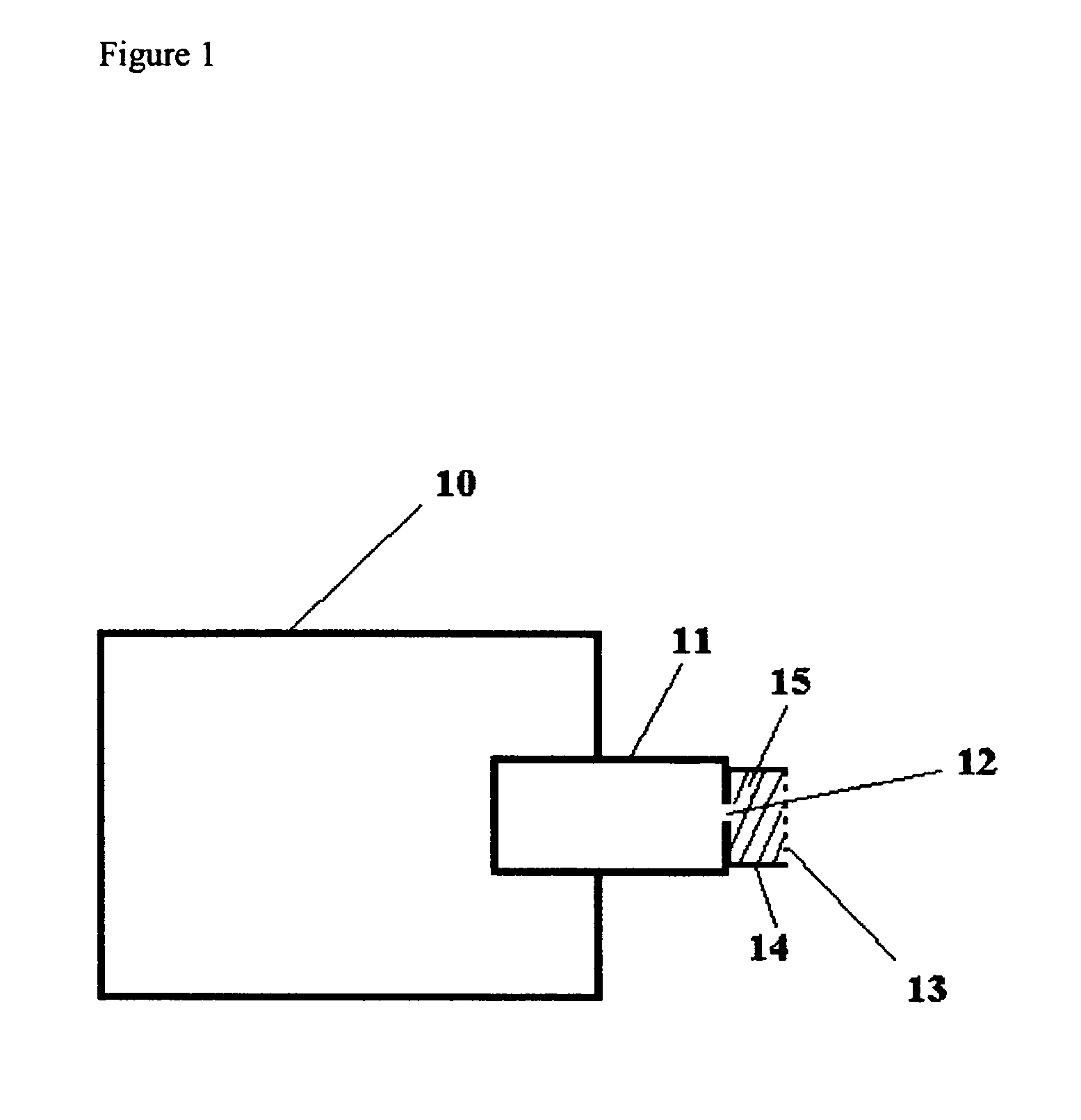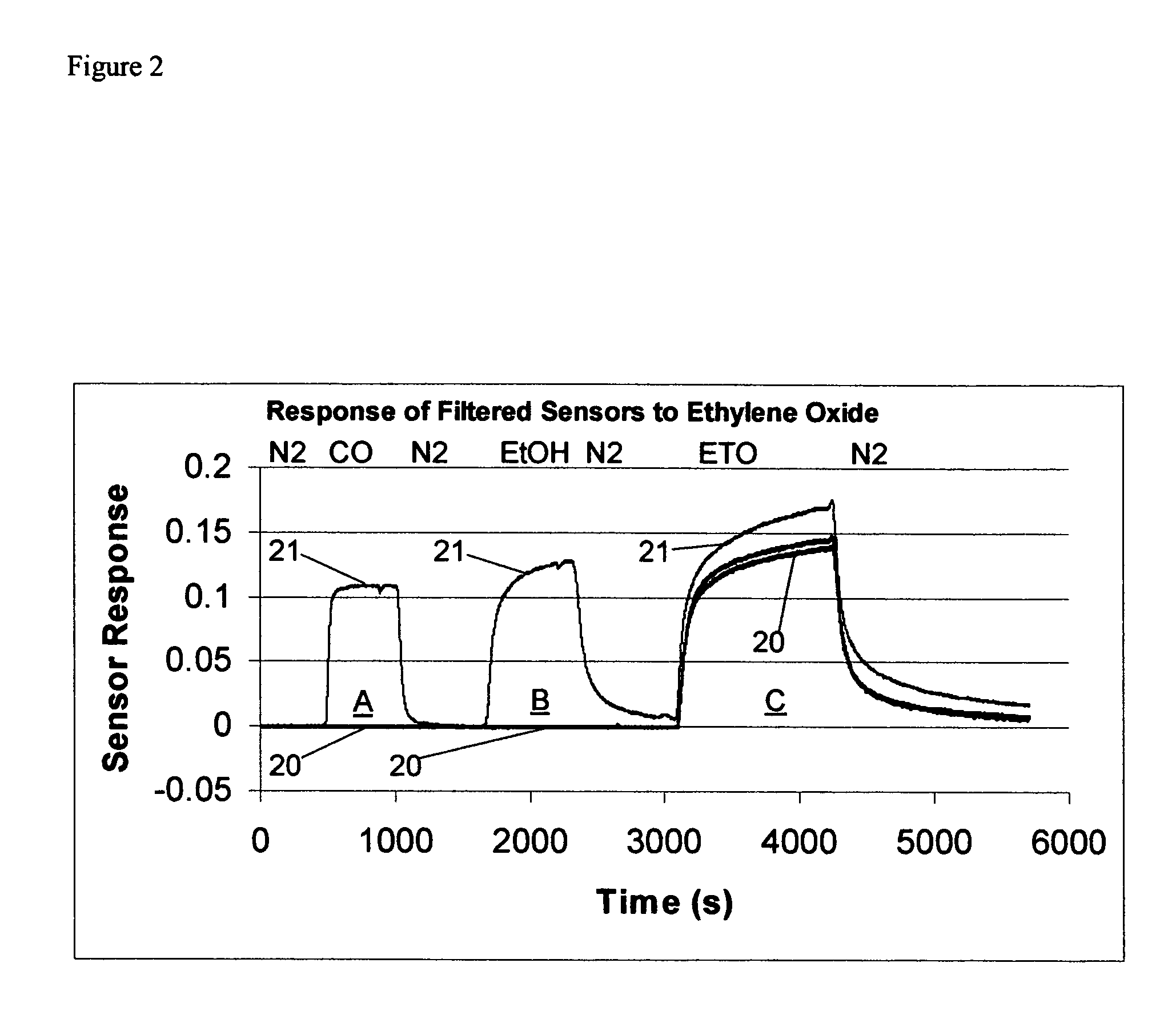Filter for gas sensor
a filter and gas sensor technology, applied in the field of chemical filters, can solve the problems of affecting the response of the sensor, requiring a supply of carrier gas, being expensive, and being large and bulky for gc based instruments, and achieve the effect of adversely affecting the sensor respons
- Summary
- Abstract
- Description
- Claims
- Application Information
AI Technical Summary
Benefits of technology
Problems solved by technology
Method used
Image
Examples
Embodiment Construction
[0020]The filter medium used to prepare the filter of the present invention is selected from among those chemical compounds that will react with alcohol present as an impurity in a gaseous medium and thus remove the alcohol from the gaseous medium without additional contamination. The reaction should occur at a rate, given the dimensions of the filter and the amount of alcohol in the gas, such that substantially no alcohol passes through the filter to reach the ethylene oxide sensor. Furthermore, the reagent and the filter substrate should be substantially non-reactive with ethylene oxide to allow ethylene oxide to pass through the filter essentially unchanged in concentration.
[0021]The theories outlined herein are presented for information purposes and represent the inventor's best understanding of the operation of the filter but the disclosure of the theories presented is not intended to provide any limitation on the scope of the invention. There are two classes of compounds that ...
PUM
 Login to View More
Login to View More Abstract
Description
Claims
Application Information
 Login to View More
Login to View More - R&D
- Intellectual Property
- Life Sciences
- Materials
- Tech Scout
- Unparalleled Data Quality
- Higher Quality Content
- 60% Fewer Hallucinations
Browse by: Latest US Patents, China's latest patents, Technical Efficacy Thesaurus, Application Domain, Technology Topic, Popular Technical Reports.
© 2025 PatSnap. All rights reserved.Legal|Privacy policy|Modern Slavery Act Transparency Statement|Sitemap|About US| Contact US: help@patsnap.com



